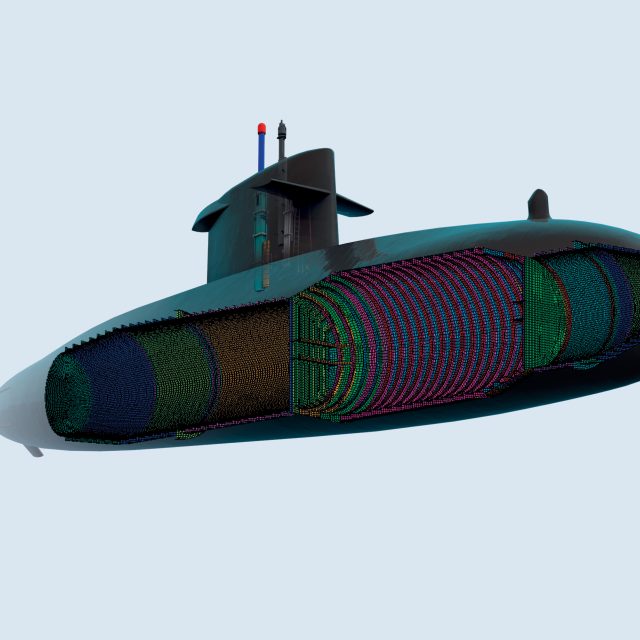
Pressure hull analysis on a reliability base

“We have to dive, otherwise they can see us!” The commander is forced to pass the submarine, which finds itself in hostile danger, beyond the operational depth. A realistic scenario involving huge risks.
If the submarine dives deeper than the outer pressure hull can handle, it may collapse. The commander must be able to make decisions quickly and carefully in emergency situations and cannot quantify the risks taken by these decisions. A submarine designer can calculate these risks using probabilistic analysis. But since these analyses are performed with numerical simulations, they are time consuming. Nevesbu is developing a new, compact formula that can accurately portray failure behaviour in a shorter calculation time. This tool is named PHAReB (Pressure Hull Analysis on a Reliability Base).
PHAReB is aimed at optimising and accelerating the process of identifying risks when a submarine dives deeper than the operational depth. The study focuses on the application of numerical simulation using the Response Surface Method or Monte-Carlo simulation. But in contrast to the present situation, it is limited only by computer power. The submarine’s commander must have sufficient information at his disposal to take a well-considered risk as he passes his ship beyond operational depth. In the event of an enemy threat, it is likely that he intentionally passes the ship into the red area of the depth gauge and thus needs sufficient information concerning the involved risk. The new formula will have to provide this information in a shorter calculation time. Marineschepen.nl has interviewed Nevesbu about the PHAReB tool, and has written an extensive article about it.
Would you like to know more about Nevesbu’s submarine engineering services and experience? Albert will be pleased to tell you more.
